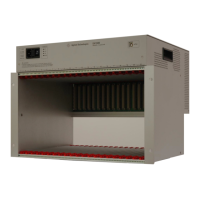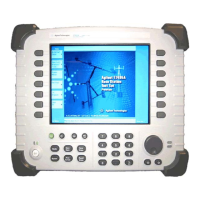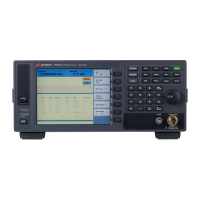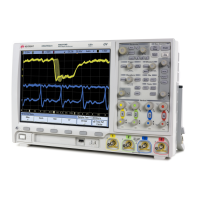Chapter 5 235
Language Reference
MEASure Group of Commands
Fetch Commands
:FETCh:<measurement>[n]?
This command puts valid data into the output buffer, but does not
initiate data acquisition. Use the INITiate[:IMMediate] command to
acquire data before you use the FETCh command. You can only fetch
results from the measurement that is currently selected.
If the optional [n] value is not included, or is set to 1, the scalar
measurement results will be returned. If the [n] value is set to a value
other than 1, the selected trace data results will be returned. See each
command for details of what types of scalar results or trace data results
are available. The binary data formats should be used for handling
large blocks of data since they are smaller and faster then the ASCII
format.
Read Commands
:READ:<measurement>[n]?
• Does not preset the measurement to the factory defaults. (The
MEASure? and CONFigure? commands reset the parameters to the
default values.) It uses the settings from the last measurement.
• Initiates the measurement and puts valid data into the output
buffer. If a measurement other than the current one is specified, the
instrument will switch to that measurement before it initiates the
measurement and returns results.
• Blocks other SCPI communication, waiting until the measurement is
complete before returning the results
If the optional [n] value is not included, or is set to 1, the scalar
measurement results will be returned. If the [n] value is set to a
value other than 1, the selected trace data results will be returned.
See each command for details of what types of scalar results or trace
data results are available. The binary data formats should be used
when handling large blocks of data since they are smaller and faster
then the ASCII format.
Measurement settings persist if you initiate a different measurement
and then return to a previous one. Use READ:<measurement>? if you
want to use those persistent settings. If you want to go back to the
default settings, use MEASure:<measurement>?.

